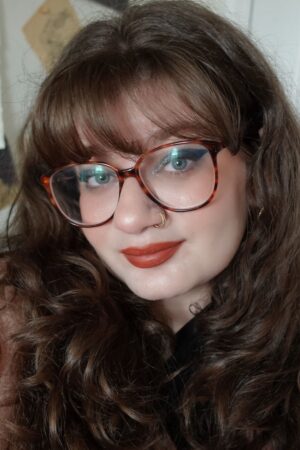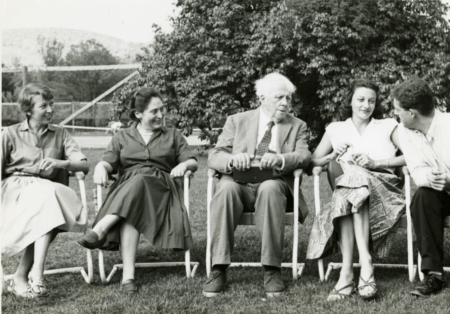Monthly wrap-up: October’s shared collections and audio-visual finds
This month on JSTOR, we continued expanding access to invaluable content, adding multimedia and archival collections that amplify voices from the past. From rare manuscripts to avant-garde films, these resources empower researchers, educators, and students to engage with underrepresented histories and cultural legacies.
Reveal Digital: amplifying underrepresented voices through crowdfunding
Reveal Digital’s open access initiative brings marginalized perspectives to the forefront through partnerships with libraries, museums, and historical societies. Its innovative use of crowdfunding ensures that these collections remain freely accessible, helping uncover stories often excluded from mainstream narratives.
American Prison Newspapers: reflections from the inside

From American Prisoner, no. 1 (October 1, 1933). Reveal Digital.
Among the most powerful collections is the American Prison Newspapers archive, which spans over 200 years of publications by incarcerated individuals. These newspapers, written under difficult conditions, reveal a complex mix of everyday experiences, political resistance, and creative expression. From personal reflections and poems to commentary on prison policies and global events, they capture the voice of individuals often denied public recognition.
This collection includes rare contributions, including from women-only facilities and underground prison presses that resisted censorship. Through these materials, researchers gain an invaluable glimpse into life within prisons—exploring not only the struggles, but also the creativity, resilience, and solidarity cultivated in confinement.
Explore the American Prison Newspapers collection.
Shared collections: a diverse range of cultural and historical archives
This month’s shared collections celebrate artistic achievements, ancient languages, literary figures, and personal archives that connect the past with the present. These collections invite researchers and learners to explore subjects from Semitic languages to the Bread Loaf Writers’ Conference archives, all now accessible through JSTOR.
Catholic University of America: rare Coptic manuscripts and archival photographs
Unlock the linguistic and cultural heritage of the Semitics/ICOR Library at the Catholic University of America. This collection includes rare Coptic manuscripts, archival photographs, and research materials on ancient Near Eastern languages, cultures, and religions. It offers an unparalleled resource for scholars interested in the linguistic evolution of ancient societies and the artistic traditions of early Christianity.
Explore the Catholic University’s collection.
Werner Collection: visual journeys across India’s artistic and architectural treasures
The Werner Collection from George Washington University spans over 25 years of photography, capturing the beauty and complexity of India’s art, archaeology, and contemporary architecture. Featuring vibrant images of temples, sculptures, and historical sites, this collection reflects how scholars like Martin Lerner and Vidya Dehejia have used visual storytelling to deepen educational engagement with art history.
Explore the Werner Collection.
Middlebury College: exploring literary legacies through the Bread Loaf Writers’ Conference archives
The Bread Loaf Writers’ Conference archives from Middlebury College highlight the enduring influence of literary figures like Robert Frost and Anne Sexton. These archives provide invaluable insights into the creative process and literary conversations that shaped 20th-century literature. The collection is particularly popular with graduate students exploring how these writers engaged with themes of nature, society, and identity.
Learn more about the Bread Loaf archives.
Rollins College: artifacts and manuscripts that capture community and history
The Rollins College Archives present a unique blend of cultural artifacts, including Walt Whitman’s handwritten notes, Fred Rogers’ personal memorabilia, and 19th-century land grants. This collection captures the spirit of learning and community, making it a valuable resource for students, historians, and curious minds alike.
Explore the treasures of Rollins College.
Audio/video: history brought to life through multimedia
This month’s audio and video offerings on JSTOR transported viewers to mid-century Brazil, avant-garde German cinema, and the vibrant streets of Vienna. These audiovisual resources bring new dimensions to research, providing a sensory experience that connects audiences with history in compelling ways.
JML Brazil (1957): glimpses of everyday life in mid-century Brazil
Through footage from the Wellcome Collection, JML Brazil captures life in a Brazilian settlement in 1957, showcasing the interactions between European healthcare workers and local communities. From bustling street markets to encounters with wildlife, the film provides a unique perspective on Brazil’s cultural and agricultural practices during this period.
Everything Turns (1929): avant-garde cinema by Hans Richter
Hans Richter’s Everything Turns, shared by Bucknell University, offers a bold visual commentary on the social and political ideas of the 1920s. This avant-garde film interweaves scenes of saunas, flags, and financial exchanges, challenging traditional cinematic narratives, and reflecting Richter’s belief that film should engage with pressing societal issues.
The Centre (1948): exploring health and community at the Pioneer Health Centre
The Centre, part of the Wellcome Collection, takes viewers inside the Pioneer Health Centre in Peckham, a social experiment that integrated wellness, leisure, and family life. Although funding challenges and the evolving NHS led to its closure, the Centre’s vision continues to influence modern wellness practices.
Muhammad Ali at Tuskegee (1966): a civil rights reflection through sound
In 1966, Muhammad Ali visited Tuskegee Institute to share his thoughts on boxing, the Nation of Islam, and the Civil Rights movement. This rare reel-to-reel audio recording, digitized by the Tuskegee University Archives, offers a candid look into one of the most iconic figures of the 20th century.
Vienna: snapshots of life from the University of Puget Sound archives
Archival footage from the University of Puget Sound offers a glimpse into everyday life in post-war Vienna. Residents stroll through streets, enjoy meals, and admire the city’s architecture—moments that capture the essence of urban life and cultural recovery.
The Five (1970): an animated tale with a twist
The animated short The Five from the Wellcome Collection imagines what toes might say after a long day in tight shoes. With humor and surrealism, the film offers a light-hearted break from more serious content.
Every collection, film, and archive shared this month embodies our commitment to making history accessible, diverse, and engaging. From the untold stories of incarcerated individuals to avant-garde cinema, these resources foster a deeper understanding of the world around us. We invite you to explore JSTOR’s expanding offerings and discover the many ways that knowledge can inspire.
About the author

Maria Papadouris is a Content and Community Engagement Manager at ITHAKA, where she works on bringing the JSTOR community together under the common goal of championing access to knowledge (and having a fun time doing it!). A first-generation Greek American and first-generation college student, Maria studied political science and creative writing, bringing an interdisciplinary approach to issues in the humanities. She is also looking to pursue graduate studies in English literature.



